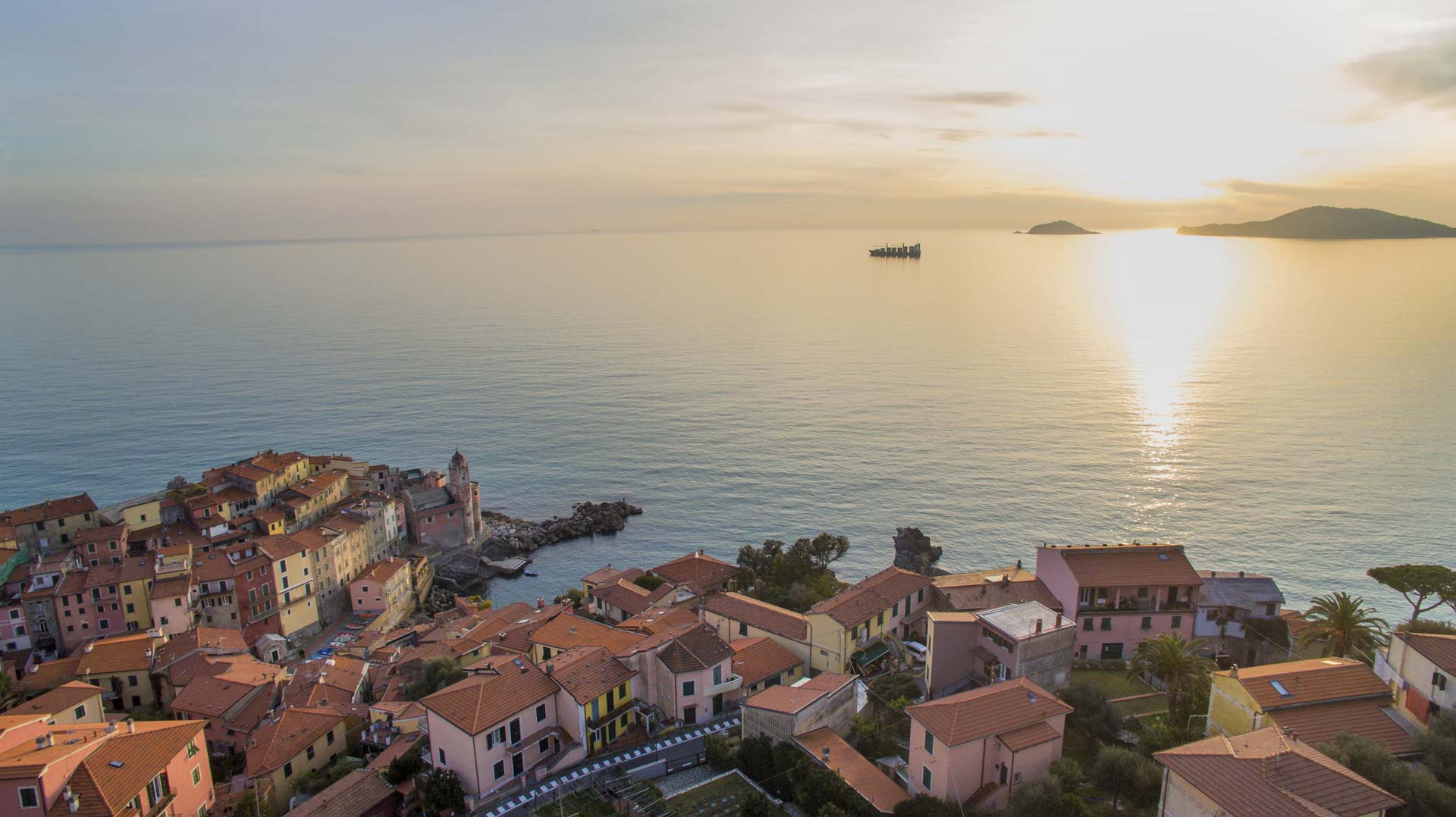Lerici and San Terenzo
This Gulf was thus named by the playwright Sem Benelli. The climate here allows a pleasant stay all year round. A calendar full of cultural events, shows, festivals, sports activities and gastronomic appointments animates this beautiful Ligurian village mainly in the summer.
The hamlet of Lerici is dominated by the imposing Genoese Castle (XIII-XVI century) that hosts the Geopaleontological Museum brought to life by the discovery, in the area, of footprints dating back to 220 million years ago. The Museum offers the visitor the chance to bring back to life, on a virtual level, the prehistoric world. Inside the castle there is also the Gothic chapel dedicated to Saint Anastasia (1250).
The “Castle to Castle” sea promenade links the marina at the foot of the Genoese Castle to the “Venere Azzurra” beach and the “San Terenzo” ones with their Castle; an enchanting path over the hills leads to Fiascherino instead.
San Rocco’s Oratory, an ex convent of cloistered nuns, is a religious building located in “Largo Guglielmo Marconi” in the historic centre of Lerici. It contains five altars with various paintings, eighteenth-century frescoes and San Rocco’s marble statue.
Saint Francesco’s church, rebuilt in 1632, preserves a remarkable artistic heritage, including two canvases by the artist “Fiasella”.
Doria Palace lies between the castle and the old harbour, in the actual “Garibaldi Square”. The Doria Museum, besides its own artistic and historic heritage, displays archive material too, hosting performances and cultural meetings.
San Terenzo is an old and picturesque hamlet located between Falconara and Lerici, mainly famous for having hosted Mary and Percy Shelley in its white “Villa Magni” overlooking the sea. The wide sandy beach attracts tourists from all over the world, so does its castle, built over a hillock dominating the sea in medieval times, right underneath “Falconara. Under this castle there is a little beach with crystal-clear waters that the locals used to call “The Turks Hideout”, a true must. During the summer this village grows lively inside the park of “Casa Shelley”, home to cultural initiatives and events, and in its characteristic restaurants in the inner alleys or “carugi”. After crossing San Terenzo, whilst heading towards the “Venere Azzurra” site, you cannot help but noticing the magnificent “Villa Marigola” with its beautiful “Italian style garden”, where many illustrious writers stayed: to this date, the villa hosts conferences and cultural activities all year round.
In the historic centre of Saint Terenzo the suggestive parish church (around 1600) dominates: it contains an oil-painting on wood dating back to the fifteenth century depicting the “Madonna of the Arena”, thus called because the story goes that it was found on the beach after a violent storm. Inside this church there are a big late sixteenth century painting by Paolo Gerolamo Piola and a bas-relief by Domenico Gar, called the “franciosino”.


